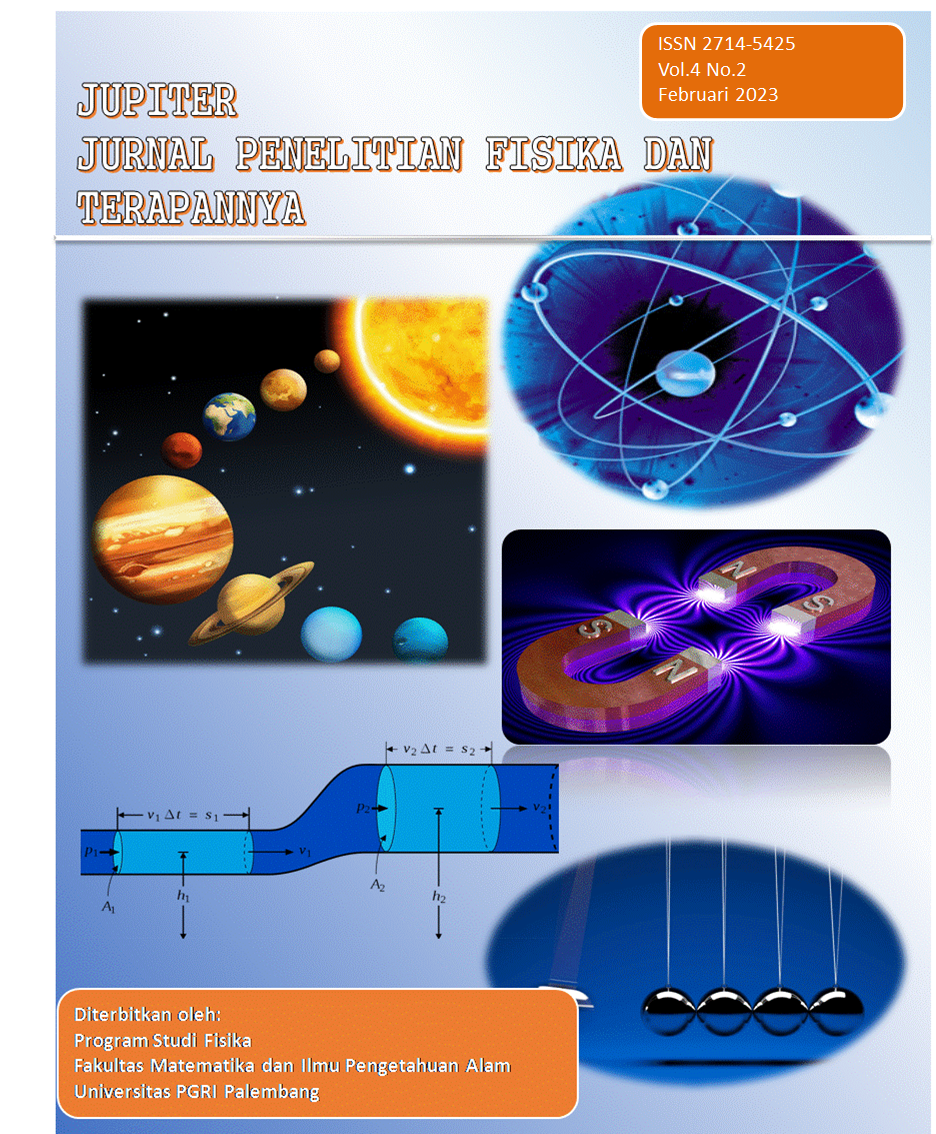Penurunan Kadar Besi (Fe) pada Air Sumur dengan Menggunakan Metode Induksi Elektromagnetik (Studi Kasus Talang Jambe)
DOI:
https://doi.org/10.31851/jupiter.v4i2.9253Keywords:
Well Water, Electromagnetic Induction, Iron ContentAbstract
Water is a very important compound for the life of living things including humans for daily needs, one of the sources of water comes from well water. Problems encountered in the well water, including the quality that does not meet quality standards. The water parameters include iron content which according to well water quality standards is 0.3 mg/l. Water quality can be improved by using the electromagnetic induction method. This study aims to analyze the decrease in iron content and dissolved ions due to electromagnetic induction. This research method uses survey and experimental methods. The survey was carried out at Surya Akbar Talang Jambe's residence accompanied by well water sampling and continued with experiments, namely the treatment of the electromagnetic induction method to reduce the levels of iron and dissolved ions. The iron content value of the well water before treatment was 47.85 ppm with 50, 80, and 100 coils and after the treatment the iron content value decreased to 45.79 ppm, 45.62 ppm, and 45.53 ppm, respectively. The parameters of dissolved ions were measured by Electrical Conductivity (EC) meter, the results obtained before treatment were 54.7 S/cm and after induction treatment with 50.80, and 100 turns, each obtained 43 S/cm, 42.8 S/ cm, and 40.6µS/cm.
References
Asmadi, Khayan, & H. S. Kasjono. 2011. Teknologi Pengolahan Air Minum. Yogyakarta: Gosyen Publishing.
Chandra & Budiman. 2012. Ilmu Kesehatan Masyarakat dalam Konteks Kesehatan Lingkungan. Penerbit Buku Kedokteran EGC.
Eso, R., M. A. A. Undu, Sumarno, & M. Anas. 2020. Efek Variasi Waktu dan Jumlah Lilitan pada Sistem Filter Elektromagnetik Terhadap Penurunan Kadar Pb, Zn dan C. Gravitasi 19(2): 40-43Jiles, D. 1998. Introduction to Magnetism and Magnetic Materials 2nd Edition. Chapman & Hall/CRC. New York.
Kemenkes, R. I. 2010. Permenkes No. 492/Menkes/Per/IV/2010 tentang Persyaratan Kualitas Air Minum. Jakarta: Kemenkes RI.
Nur, Risal. 2011. Pemanfaatan Tanaman Enceng Gondok Dalam Menurunkan Kadar Besi (Fe) Pada Air Sumur Gali/Bor (Eksperimen). Makassar: Program Diploma III Jurusan Kesehatan Lingkungan Politeknik Kesehatan Makassar.
Rahmawati, K. P. 2021. Efektifitas Jenis Arang Sebagai Media Filtrasi Untuk Menurunkan Kadar Besi Pada Air Tanah. Disertasi. Poltekkes Kemenkes Yogyakarta. (Dipublikasikan).
Sanjaya & Moerkani, 2011 Lama Waktu Kontak Arang Aktif Cangkang Kopi Sebagai Adsorben Dalam Menurunkan Kadar Besi (Fe) Pada Air Sumur Gali. Disertasi. Poltekkes Kemenkes Yogyakarta. (Dipublikasikan).
Sudarti. 2010. Mekanisme Peningkatan Kalsium Sel Germinal Pada Mencit Bulb/C yang Dipapar Medan Magnet Extremely Low Frequency (ELF) 100-150 μT. Disertasi. Universitas Jember. (Dipublikasikan).
Downloads
Published
Issue
Section
License

 JUPITER: Jurnal Penelitian Fisika dan Terapannya by http://www.univpgri-palembang.ac.id/e_jurnal/index.php/Jupiter/ is licensed under a Creative Commons Attribution-ShareAlike 4.0 International License.


















